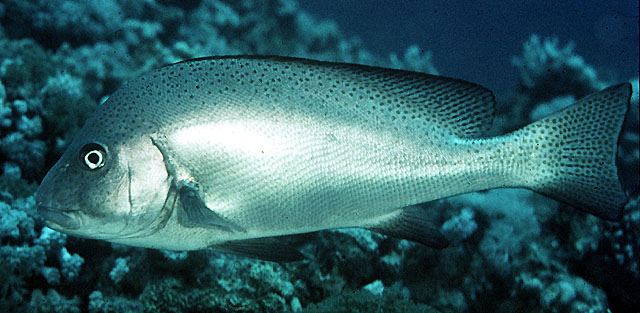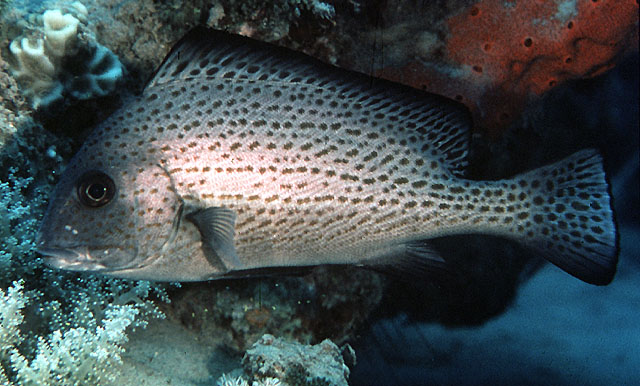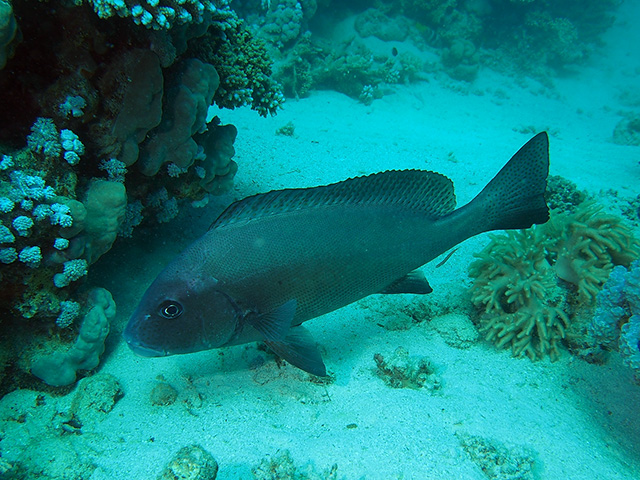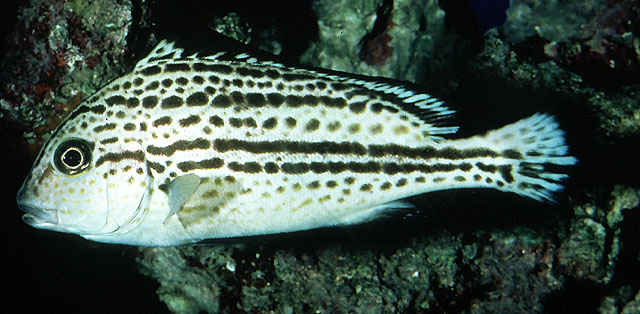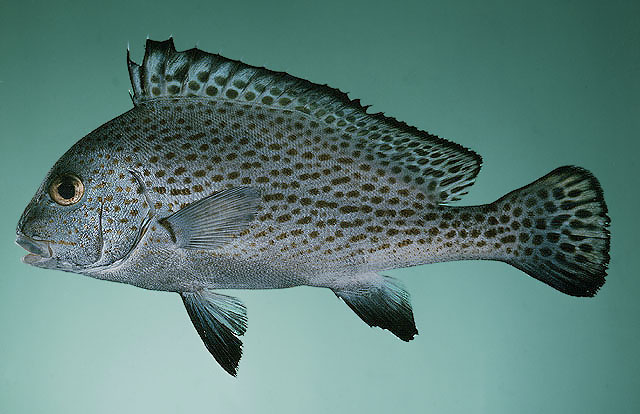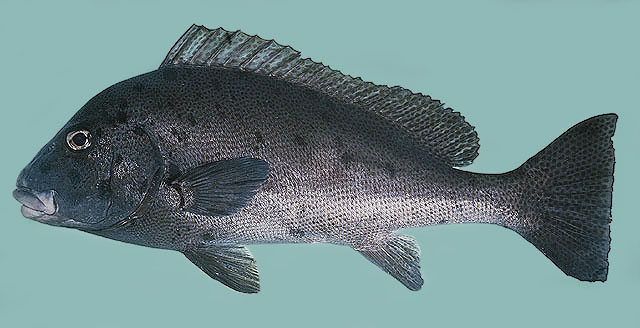Diagramma
punctatum
Cuvier,
1830
View all media / Upload your photos and videos
Expand all
Classification / Names
Teleostei (teleosts) > Eupercaria/misc (Various families in series Eupercaria) >
Haemulidae (Grunts)
> Plectorhinchinae
Etymology: Diagramma: Greek, diagramma = mark out by lines (Ref. 45335).
More on author:
Cuvier.
Environment / milieu / depth range / climate zone / distribution range
Marine; benthopelagic; tropical.
Distribution
Western Indian Ocean: Red Sea endemic and Socotra.
Maps

Diagramma punctatum / Native range
AquaMaps Data sources:
GBIF
OBIS
This map was computer-generated and has not yet been reviewed.

Diagramma punctatum / Suitable habitat
AquaMaps Data sources:
GBIF
OBIS
This map was computer-generated and has not yet been reviewed.

Diagramma punctatum / Point map
AquaMaps Data sources:
GBIF
OBIS
This map was computer-generated and has not yet been reviewed.

Diagramma punctatum / Year 2050
AquaMaps Data sources:
GBIF
OBIS
This map was computer-generated and has not yet been reviewed.
Length at first maturity / Size / Weight / Age
Life cycle and mating behavior
Distinct pairing during breeding (Ref. 205).
Main reference
Parenti, P. 2019 An annotated checklist of the fishes of the family Haemulidae (Teleostei: Perciformes). Iran. J. Ichthyol. 6(3):150-196. (Ref. 119443)
IUCN Red List Status (Ref. 125652)
CITES (Ref. 131153)
Not Evaluated
CMS (Ref. 116361)
Not Evaluated
Threat to humans
Harmless
More information
- Countries
- FAO areas
- Ecosystems
- Occurrences
- Introductions
- Stocks
- Ecology
- Diet
- Food items
- Food consumption
- Ration
- Common names
- Synonyms
- Metabolism
- Predators
- Ecotoxicology
- Reproduction
- Maturity
- Spawning
- Spawning aggregation
- Fecundity
- Eggs
- Egg development
- Age/Size
- Growth
- Length-weight
- Length-length
- Length-frequencies
- Morphometrics
- Morphology
- Larvae
- Larval dynamics
- Recruitment
- Abundance
- References
- Aquaculture
- Aquaculture profile
- Strains
- Genetics
- Allele frequencies
- Heritability
- Diseases
- Processing
- Mass conversion
- Vision
- Pictures
- Stamps, Coins Misc.
- Sounds
- Ciguatera
- Speed
- Swim. type
- Gill area
- Otoliths
- Brains
Estimates based on models
Preferred temperature (Ref. 123201): 19.7 - 29.1, mean 28.4 °C (based on 91 cells).
Phylogenetic diversity index (Ref. 82804): PD50 = 0.5312 [Uniqueness, from 0.5 = low to 2.0 = high].
Bayesian length-weight: a=0.01950 (0.00835 - 0.04555), b=2.95 (2.76 - 3.14), in cm total length, based on LWR estimates for this (Sub)family-body shape (Ref. 93245).
Trophic level (Ref. 69278): 3.6 ±0.5 se; Based on size and trophs of closest relatives.
Resilience (Ref. 120179): Medium, minimum population doubling time 1.4 - 4.4 years (Preliminary K or Fecundity.).
Fishing vulnerability (Ref. 59153): Low to moderate vulnerability (31 of 100).
Nutrients (Ref. 124155): Calcium = 0 [0, 0] mg/100g; Iron = 0 [0, 0] mg/100g; Protein = 0 [0, 0] %; Omega3 = 0 [0, 0] g/100g; Selenium = 0 [0, 0] μg/100g; VitaminA = 0 [0, 0] μg/100g; Zinc = 0 [0, 0] mg/100g (wet weight);

